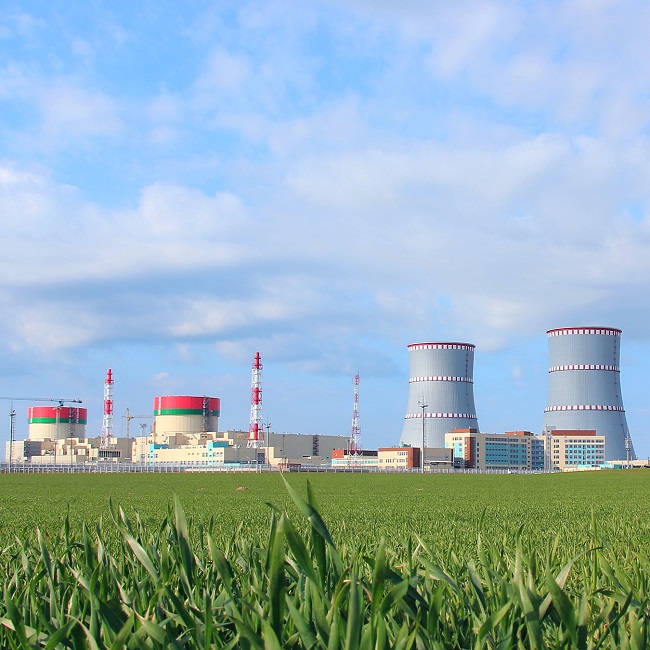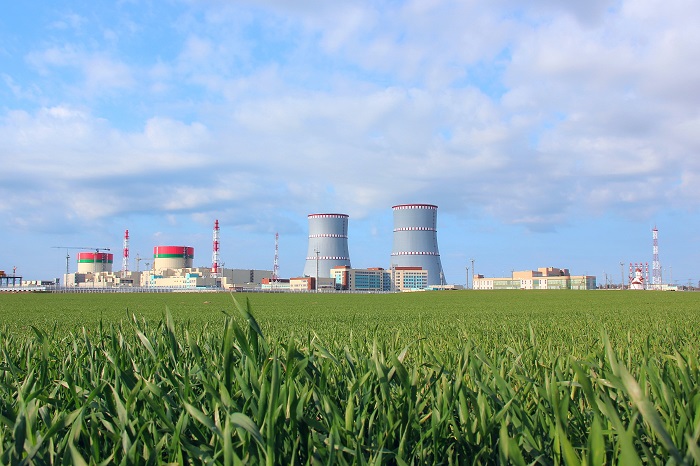
On August 7, fuel loading began at the Belarusian NPP Unit 1. Rosatom Engineering Division is the general designer and general contractor of the NPP.
At 11:45 the first fuel assembly was loaded into the reactor of Unit 1. A total of 163 assemblies will be loaded before the end of the month.
Following the fuel loading, the reactor will reach the minimum controllable level (1% of the total power capacity) and relevant tests will be performed.
From that moment on, the reactor acquires the status of a nuclear power facility. After reliability and safety of the power unit at its design parameters are verified, the next stage of the power start-up will begin and the reactor will be connected to the grid for the first time.
“The Republic of Belarus has become the owner of a power unit built according to the latest Gen 3+ technologies. This technology has been proved and tested through the operation of similar power units in Russia. They meet all the post-Fukushima safety requirements, and all the IAEA missions have recognized their reliability. It is very important for us that we have built the first VVER-1200 unit abroad in the Republic of Belarus, a good neighbor of ours,” ROSATOM Director General Alexey Likhachev said on the occasion.

The Belarusian NPP construction project is being implemented in an open and transparent manner. The power plant meets all the IAEA safety requirements. Belarus cooperates with the management and experts of the organization regularly, and it also interacts with representatives of the European Commission and the European Nuclear Safety Regulators Group (ENSREG). Overall, in 2012-2020, seven key IAEA missions, which are recommended for countries building their first nuclear power plants, were carried out.
Belarusian NPP Unit 1 became the first unit of the newest Gen 3+ built using Russian technologies abroad. Currently, three power units of this type are successfully operated in Russia: two at the Novovoronezh NPP and one at the Leningrad NPP. Furthermore, in July, construction was completed and start-up operations began at the fourth Russian Gen 3+ power unit at the Leningrad NPP Unit 6.
“Compared to the power units with the VVER-1000 reactor of the previous generation, the innovative Gen 3+ power unit with the VVER-1200 reactor has a number of advantages that significantly increase its economic performance and safety.” – Andrey Petrov, Director General of the Rosenergoatom – First Vice-President for nuclear power plant construction of the ASE Group, noted, – The main feature of the VVER-1200 is a unique combination of active and passive safety systems that make the NPP fully resistant to external and internal influences. For example, all power units are equipped with a core catcher, a device provided to catch the molten core material of a nuclear reactor, as well as other passive safety systems capable of operating in complete power outage and without operators. In addition, the capacity of the power unit has increased by 20%, the number of maintenance personnel has been significantly reduced, and the design life of the main equipment has been doubled from 30 to 60 years with the possibility of extending it for another 20 years”.
Today, Finland, Hungary, Turkey, Bangladesh, Egypt and others choose NPPs with Gen 3+ power units of Russian design.
Atomenergomash JSC is a supplier of all key equipment of the nuclear island for the Belarusian NPP. The fuel was produced at the Novosibirsk Chemical Concentrates Plant (NCCP); its enrichment level varies from 1.3% to 4.4%.
ROSATOM is a recognized global leader and the only company in the world that implements the serial construction of nuclear power plants abroad. Around the world, 102 nuclear power facilities of Russian design have been built, including 78 power units with VVER reactors. Today, Rosatom’s international order portfolio includes 36 VVER units at different stages of implementation in 12 countries, of which 25 units are under construction in nine countries.
For reference:
ROSATOM is the only company in the world that has the resources and competencies to offer energy solutions across the nuclear supply chain. It possesses a wide range of assets, including assets in design, construction and operation of nuclear power stations, uranium mining, conversion and enrichment, supply of nuclear fuel, decommissioning, spent fuel storage and transportation and safe nuclear waste disposal. Rosatom is also engaged in the production of equipment and isotope products for the needs of nuclear medicine, scientific research, and materials science, the production of digital and of various nuclear and non-nuclear innovative products. The company’s strategy is to develop low-carbon power generation projects, including in the wind generation field. Today the company brings together over 300 enterprises and organizations and over 250,000 employees.